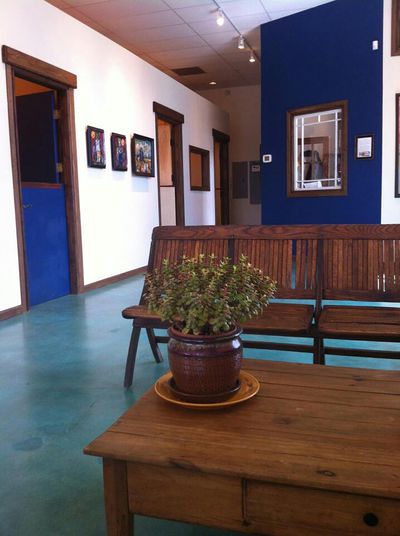Catwilmes log: Difference between revisions
No edit summary |
No edit summary |
||
| Line 3: | Line 3: | ||
*I proposed the idea of colored concrete for an inexpensive yet aesthetically pleasing floor option | *I proposed the idea of colored concrete for an inexpensive yet aesthetically pleasing floor option | ||
*Precedents for this was a parlor located in Boulder, CO | *Precedents for this was a parlor located in Boulder, CO | ||
[[image:Colored_Concrete.jpg|400px]] | |||
*Suggested color for kitchen of HabLab would be a dark green to incorporate the natural colors and the green trim of the interior | *Suggested color for kitchen of HabLab would be a dark green to incorporate the natural colors and the green trim of the interior | ||
Revision as of 16:14, 12 March 2014
Wednesday March 12, 2014
- I proposed the idea of colored concrete for an inexpensive yet aesthetically pleasing floor option
- Precedents for this was a parlor located in Boulder, CO
- Suggested color for kitchen of HabLab would be a dark green to incorporate the natural colors and the green trim of the interior
STEPS TO COLORING CONCRETE:
Step 1 - Choose a Color Dye
Examine the concrete pad you want to dye. You may want to dye the pad a single color or you may want to dye the concrete in a pattern. Decide what color you want to use and then purchase the dye from your local home improvement retailer.
Step 2 - Remove Sealant
Before you apply the dye, pour water on the concrete pad. If the water pools or is not absorbed into the concrete, then there is a sealant applied to the concrete. This will need to be removed with a concrete sealant stripper and the surface of the pad sanded to open the porous structure of the concrete.
Step 3 - Test the Dye
Test a small patch of concrete to make sure that the dye will take on your concrete. Let the dye dry overnight and check the color the next day. Examine the depth of the color and if it is deep then the dye will work for your project.
If the color is faded or is not deep, then you will need to strip the concrete sealer further from the concrete pad and sand the surface of the concrete. This will allow the dye to penetrate into the concrete. Conduct another dye test.
Step 4 - Clean the Concrete
Sweep the concrete and apply the concrete cleaner. Scrub the concrete completely clean, removing any dust, debris or dirt.
Step 5 - Mix the Dye
Mix the dye in the 5 gallon bucket. Pour the dye concentrate into the bucket and add water. This will dilute the dye to the desired shade.
Step 6 - Apply the Dye to the Concrete
Apply the dye to the concrete with the pump sprayer. If you are planning on an artistic application of dye in a pattern with different colors, then instead of using the sprayer, then use sponges, an airbrush or paintbrushes to apply the dye.
Step 7 - Let the Dye Dry
Allow the dye to dry for at least 24 hours.
Step 8 - Apply Sealant
Apply a concrete sealant to protect the dye and prevent cracks or damage to the cement. Using a large roller, apply the sealant in an even and consistent layer over the concrete pad. In order to avoid streaks, apply the sealant in overlapping strokes, concentrating in one area at a time. Let the dry for 24 to 48 hours before using the concrete pad.
Read more: http://www.doityourself.com/stry/how-to-color-concrete#b#ixzz2vlTBfkfu
Tuesday March 11, 2014
- White-washed the exterior, south facing wall of the HabLab
- Painted trim interior of the HabLab
Monday March 10, 2014
- Discussion of HabLab entry design, driving design, and parking design
- For the entrance of the HabLab,a pergola was suggested; wisteria greenery to grow on top and on sides of pergola
- Created Preliminary drawings for parking
- Painted chalk wall inside of HabLab
Sunday March 9, 2014
- Review/tour of the site to understand the layout of FactorE Farm
- Talk about incorporating a summer campsite, parking lot for visitors, and improvements on the HabLab
- Painted trim on doorways of the HabLab
